🔭🌃🌌
🔭🌃🌌
Cosmic Alphabet Soup: Classifying Stars

If you’ve spent much time stargazing, you may have noticed that while most stars look white, some are reddish or bluish. Their colors are more than just pretty – they tell us how hot the stars are. Studying their light in greater detail can tell us even more about what they’re like, including whether they have planets. Two women, Williamina Fleming and Annie Jump Cannon, created the system for classifying stars that we use today, and we’re building on their work to map out the universe.

By splitting starlight into spectra – detailed color patterns that often feature lots of dark lines – using a prism, astronomers can figure out a star’s temperature, how long it will burn, how massive it is, and even how big its habitable zone is. Our Sun’s spectrum looks like this:

Astronomers use spectra to categorize stars. Starting at the hottest and most massive, the star classes are O, B, A, F, G (like our Sun), K, M. Sounds like cosmic alphabet soup! But the letters aren’t just random – they largely stem from the work of two famous female astronomers.

Williamina Fleming, who worked as one of the famous “human computers” at the Harvard College Observatory starting in 1879, came up with a way to classify stars into 17 different types (categorized alphabetically A-Q) based on how strong the dark lines in their spectra were. She eventually classified more than 10,000 stars and discovered hundreds of cosmic objects!

That was back before they knew what caused the dark lines in spectra. Soon astronomers discovered that they’re linked to a star’s temperature. Using this newfound knowledge, Annie Jump Cannon – one of Fleming’s protégés – rearranged and simplified stellar classification to include just seven categories (O, B, A, F, G, K, M), ordered from highest to lowest temperature. She also classified more than 350,000 stars!

Type O stars are both the hottest and most massive in the new classification system. These giants can be a thousand times bigger than the Sun! Their lifespans are also around 1,000 times shorter than our Sun’s. They burn through their fuel so fast that they only live for around 10 million years. That’s part of the reason they only make up a tiny fraction of all the stars in the galaxy – they don’t stick around for very long.

As we move down the list from O to M, stars become progressively smaller, cooler, redder, and more common. Their habitable zones also shrink because the stars aren’t putting out as much energy. The plus side is that the tiniest stars can live for a really long time – around 100 billion years – because they burn through their fuel so slowly.

Astronomers can also learn about exoplanets – worlds that orbit other stars – by studying starlight. When a planet crosses in front of its host star, different kinds of molecules in the planet’s atmosphere absorb certain wavelengths of light.
By spreading the star’s light into a spectrum, astronomers can see which wavelengths have been absorbed to determine the exoplanet atmosphere’s chemical makeup. Our James Webb Space Telescope will use this method to try to find and study atmospheres around Earth-sized exoplanets – something that has never been done before.

Our upcoming Nancy Grace Roman Space Telescope will study the spectra from entire galaxies to build a 3D map of the cosmos. As light travels through our expanding universe, it stretches and its spectral lines shift toward longer, redder wavelengths. The longer light travels before reaching us, the redder it becomes. Roman will be able to see so far back that we could glimpse some of the first stars and galaxies that ever formed.
Learn more about how Roman will study the cosmos in our other posts:
Roman’s Family Portrait of Millions of Galaxies
New Rose-Colored Glasses for Roman
How Gravity Warps Light
Make sure to follow us on Tumblr for your regular dose of space!
More Posts from Monstrous-mind and Others
🐾🐈💀

🔭🌃🌌🪐🍁🍂⛄
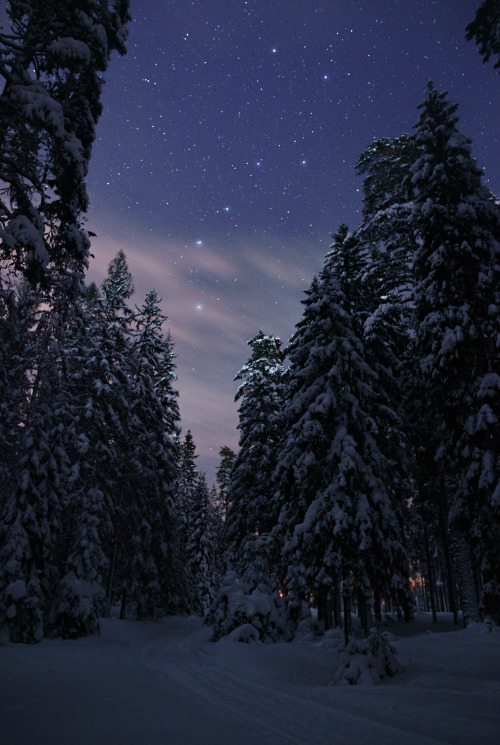
Under the big dipper
by: Mikhail Reva

🍂🍁🍂🍁
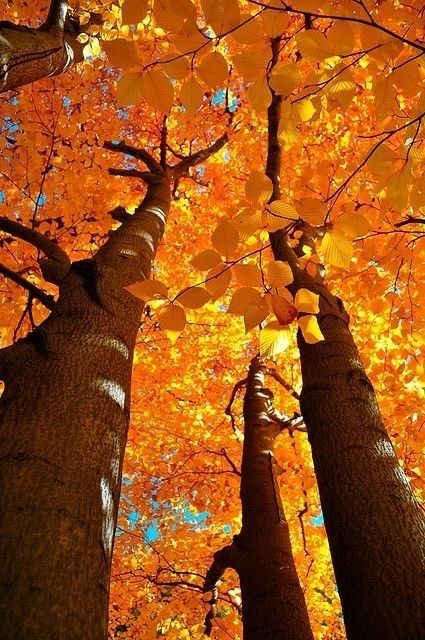
~ Orange and Brown ~
🔭🌃🌌


Galaxy UGC 2885 may be the largest one in the local universe. It is 2.5 times wider than our Milky Way and contains 10 times as many stars. This galaxy is 232 million light-years away, located in the northern constellation of Perseus.
Credit: NASA, ESA, and B. Holwerda (University of Louisville)
🐈🍂🍁
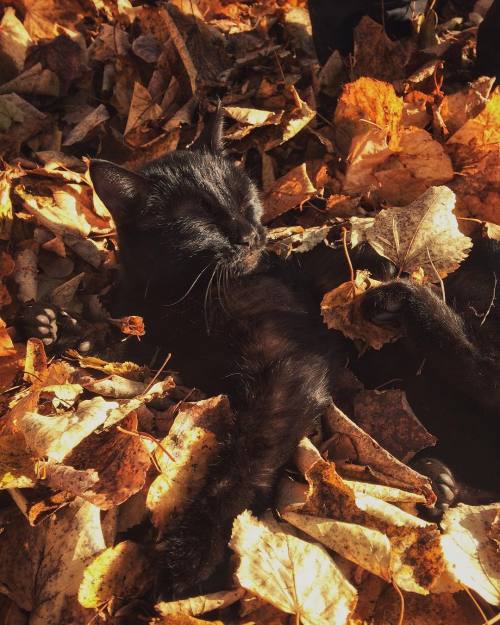
🔭🌃🌌

Kepler-186f is the first Earth-sized planet ever found that also orbits in its star’s habitable zone. Although its size and orbit are known, its mass and composition are not - however, existing models suggest that it could have a rocky terrain and an atmosphere, making it potentially the most Earth-like planet discovered so far.

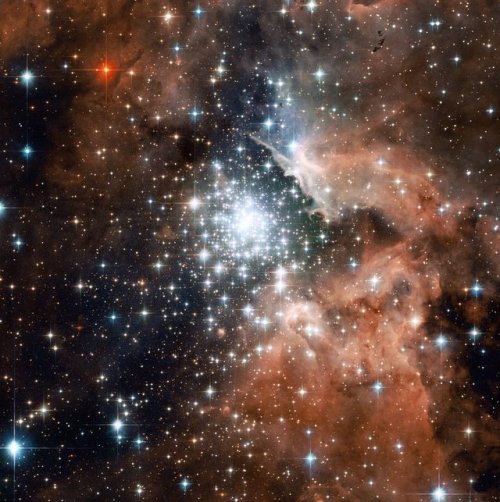
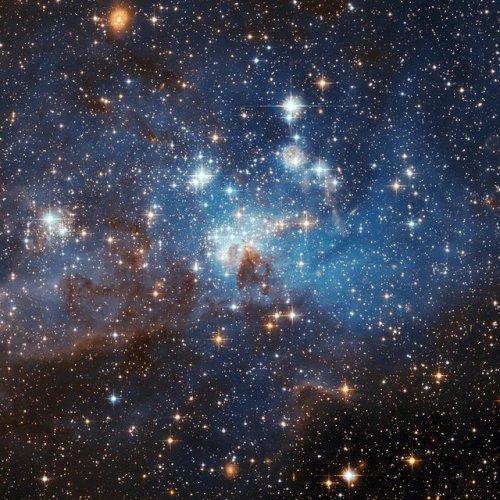
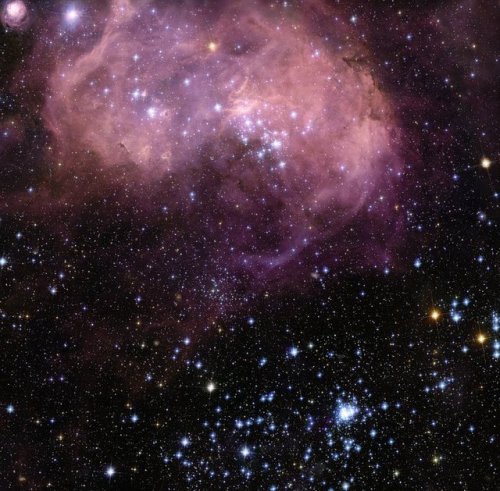
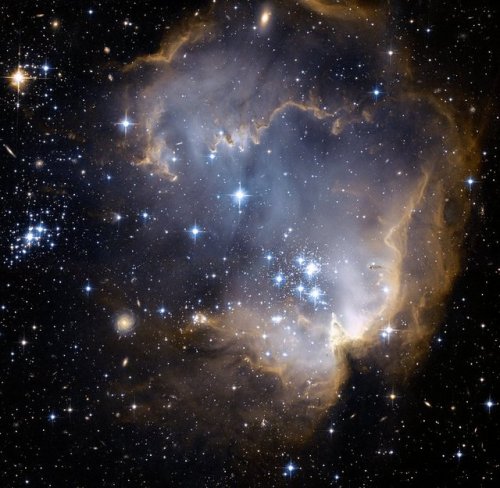
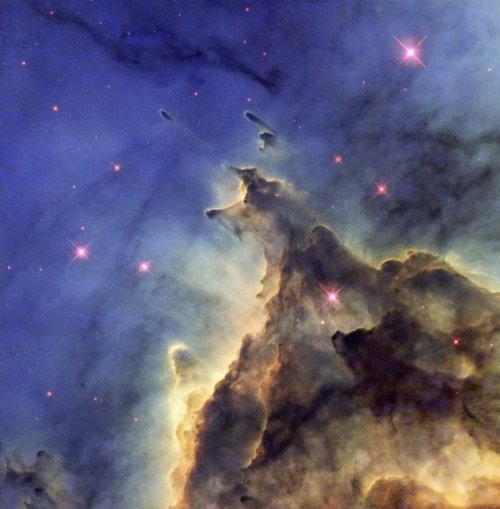
Star-forming regions amid gas and dust taken by the Hubble Space Telescope. (NGC 2467, NGC 3603, Star forming region in the Large Magellanic Cloud (LMC), N11, N90 and NGC 2174)
Image credit: NASA/ESA & Hubble
🔭🌌☄️🪐

2024 September 8
M31: The Andromeda Galaxy Image Credit: Subaru (NAOJ), Hubble (NASA/ESA), Mayall (NSF); Processing & Copyright: R. Gendler & R. Croman
Explanation: The most distant object easily visible to the unaided eye is M31, the great Andromeda Galaxy. Even at some two and a half million light-years distant, this immense spiral galaxy – spanning over 200,000 light years – is visible, although as a faint, nebulous cloud in the constellation Andromeda. A bright yellow nucleus, dark winding dust lanes, and expansive spiral arms dotted with blue star clusters and red nebulae, are recorded in this stunning telescopic image which combines data from orbiting Hubble with ground-based images from Subaru and Mayall. In only about 5 billion years, the Andromeda galaxy may be even easier to see – as it will likely span the entire night sky – just before it merges with, or passes right by, our Milky Way Galaxy.
∞ Source: apod.nasa.gov/apod/ap240908.html

-
 kowvo reblogged this · 5 months ago
kowvo reblogged this · 5 months ago -
 bo-ink liked this · 5 months ago
bo-ink liked this · 5 months ago -
 suga-catt reblogged this · 5 months ago
suga-catt reblogged this · 5 months ago -
 suga-catt liked this · 5 months ago
suga-catt liked this · 5 months ago -
 sporemiette liked this · 5 months ago
sporemiette liked this · 5 months ago -
 heartclutter reblogged this · 5 months ago
heartclutter reblogged this · 5 months ago -
 annita89slyzpqlkh liked this · 5 months ago
annita89slyzpqlkh liked this · 5 months ago -
 haz77zard liked this · 7 months ago
haz77zard liked this · 7 months ago -
 unieetsearthquake686 liked this · 10 months ago
unieetsearthquake686 liked this · 10 months ago -
 brisadebird736 liked this · 10 months ago
brisadebird736 liked this · 10 months ago -
 artemisdio liked this · 11 months ago
artemisdio liked this · 11 months ago -
 lululumune liked this · 1 year ago
lululumune liked this · 1 year ago -
 azufres reblogged this · 1 year ago
azufres reblogged this · 1 year ago -
 estefanyailen liked this · 1 year ago
estefanyailen liked this · 1 year ago -
 crispygarlick liked this · 1 year ago
crispygarlick liked this · 1 year ago -
 lillekins reblogged this · 1 year ago
lillekins reblogged this · 1 year ago -
 stargazerlillian liked this · 1 year ago
stargazerlillian liked this · 1 year ago -
 herhideoutturtle liked this · 1 year ago
herhideoutturtle liked this · 1 year ago -
 ad-astra-affecte-spe reblogged this · 1 year ago
ad-astra-affecte-spe reblogged this · 1 year ago -
 ignoinnoni liked this · 1 year ago
ignoinnoni liked this · 1 year ago -
 nekomansir liked this · 1 year ago
nekomansir liked this · 1 year ago -
 fuckneckdipm8 reblogged this · 1 year ago
fuckneckdipm8 reblogged this · 1 year ago -
 whitestnoise reblogged this · 1 year ago
whitestnoise reblogged this · 1 year ago -
 emgamocosi liked this · 1 year ago
emgamocosi liked this · 1 year ago -
 layer-10-love liked this · 1 year ago
layer-10-love liked this · 1 year ago -
 0-1-777 liked this · 1 year ago
0-1-777 liked this · 1 year ago -
 neuvirtualoasis reblogged this · 1 year ago
neuvirtualoasis reblogged this · 1 year ago -
 khushiyanhikhushiyan liked this · 1 year ago
khushiyanhikhushiyan liked this · 1 year ago -
 daisymayreadz liked this · 1 year ago
daisymayreadz liked this · 1 year ago -
 jibsdchidebchi liked this · 1 year ago
jibsdchidebchi liked this · 1 year ago -
 cbsblog liked this · 1 year ago
cbsblog liked this · 1 year ago -
 dmresstuff liked this · 1 year ago
dmresstuff liked this · 1 year ago -
 sailorsenshisweetheart liked this · 1 year ago
sailorsenshisweetheart liked this · 1 year ago -
 user-4725 liked this · 1 year ago
user-4725 liked this · 1 year ago -
 lesfleursrouges liked this · 1 year ago
lesfleursrouges liked this · 1 year ago -
 anxiousdepessedartist liked this · 1 year ago
anxiousdepessedartist liked this · 1 year ago -
 dangeroussciencebiologydonut liked this · 1 year ago
dangeroussciencebiologydonut liked this · 1 year ago -
 ayearofgoodfate reblogged this · 1 year ago
ayearofgoodfate reblogged this · 1 year ago -
 ayearofgoodfate liked this · 1 year ago
ayearofgoodfate liked this · 1 year ago -
 jasminoutlaw liked this · 1 year ago
jasminoutlaw liked this · 1 year ago
My ambition is handicapped by laziness. -C. Bukowski Me gustan las personas desesperadas con mentes rotas y destinos rotos. Están llenos de sorpresas y explosiones. -C. Bukowski. I love cats. Born in the early 80's, raised in the 90's. I like Nature, Autumn, books, landscapes, cold days, cloudy Windy days, space, Science, Paleontology, Biology, Astronomy, History, Social Sciences, Drawing, spending the night watching at the stars, Rick & Morty. I'm a lazy ass.
222 posts